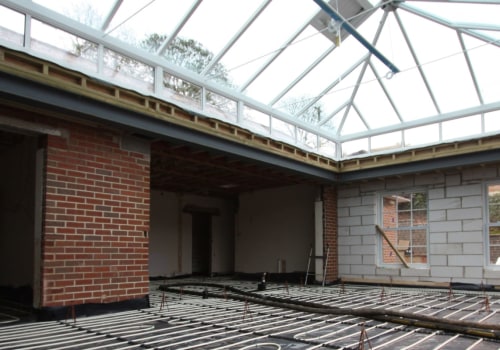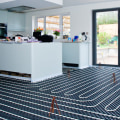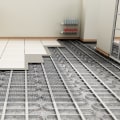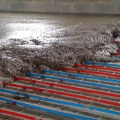RADIANT HEAT underfloor heating heats a room evenly without overheating, saving up to 15% on the average annual heating bill. Underfloor heating converts the entire surface of the floor into a radiant heating that creates an overall comfortable room temperature. Hydronic (liquid) systems are the most popular and cost-effective radiant heating systems for climates dominated by heating. Hydronic underfloor systems pump hot water from a boiler through pipes laid in a pattern under the floor.
In some systems, controlling the flow of hot water through each piping loop by using zoning valves or pumps and thermostats regulates the ambient temperature. The cost of installing a hydronic radiant floor varies by location and depends on the size of the house, the type of installation, the floor covering, the remoteness of the site and the cost of labor. An electric underfloor heating system uses electric heating cables to heat floors. Installation is fast and incredibly efficient.
Electrical systems are also cost-effective and less expensive to install (compared to other heating systems), especially when long-term electricity costs are taken into account. Electrical systems also do not require ongoing maintenance. They are installed and ready to go. Floor heating is practically 100 percent energy efficient due to the way it transmits heat.
It uses electricity or hot water to heat a room below the floor using infrared radiation. This means that it uses direct contact to heat people and objects in a room. Unlike forced air systems, there is no air blowing, which means there are no ducts susceptible to leakage. Therefore, as long as a room is adequately insulated (with the right amount of insulating materials and the right types of insulation), electric and hydronic (hot water) radiant heating systems do not offer an escape route for heat.
As heat pumps operate at a lower temperature than boilers (the optimum temperature is between 30°C and 35°C), they are suitable for heat distribution systems at lower temperatures, such as underfloor heating. Radiant systems heat the floor and that heat is radiated and absorbed by other objects in the room, which helps to heat the entire space efficiently. It is more efficient than baseboard heating and generally more efficient than forced air heating because it eliminates duct losses.
Underfloor heating
is an easy and energy efficient way to heat your home and keep your toes comfortable.In addition, most people also add some insulation panels to maximize the efficiency of the system, which adds another inch to the floor. Typically, this efficiency means that supplementing the main heating system with underfloor heating can result in long-term energy savings. Underfloor heating has the potential to be more efficient than radiators when it comes to room heating, up to 30% more efficient in the case of a wet system; however, keep in mind that electrical systems tend to be more expensive to operate. Of course, combining a radiant heating system with an EnergyStar-approved energy-efficient programmable thermostat can save households hundreds of dollars a year on home heating bills and keep residents warmer all year round.
Installing electrical baseboards is cheaper than installing a radiant heating system, however, long-term costs are usually much higher because they are not as efficient. Don't skimp on insulation underneath your system, or the heat will radiate down and be less efficient. Old House plumbing and heating expert Richard Trethewey guides you through two types of heated floors in terms of cost, installation and energy efficiency to select the right one for your home. Maximum financial savings will be realized when you use UFH in a thermally efficient home, minimizing the amount of heat that is wasted when it is filtered to the outside.
Learn more about this later. When correctly specified and installed inside a well-insulated house, underfloor heating is one of the most efficient ways to heat a building. Once you have verified that your room is well insulated, you can use a programmable thermostat to further improve the efficiency of the underfloor heating system. Let it dry for 24 hours and you're ready to start installing your heating system and then your floor covering (we offer underfloor heating systems for everything from tile to carpet to hardwood flooring).
Unlike HVAC systems, heaters, radiators and other heating options, underfloor systems are designed to be discreet. . .











